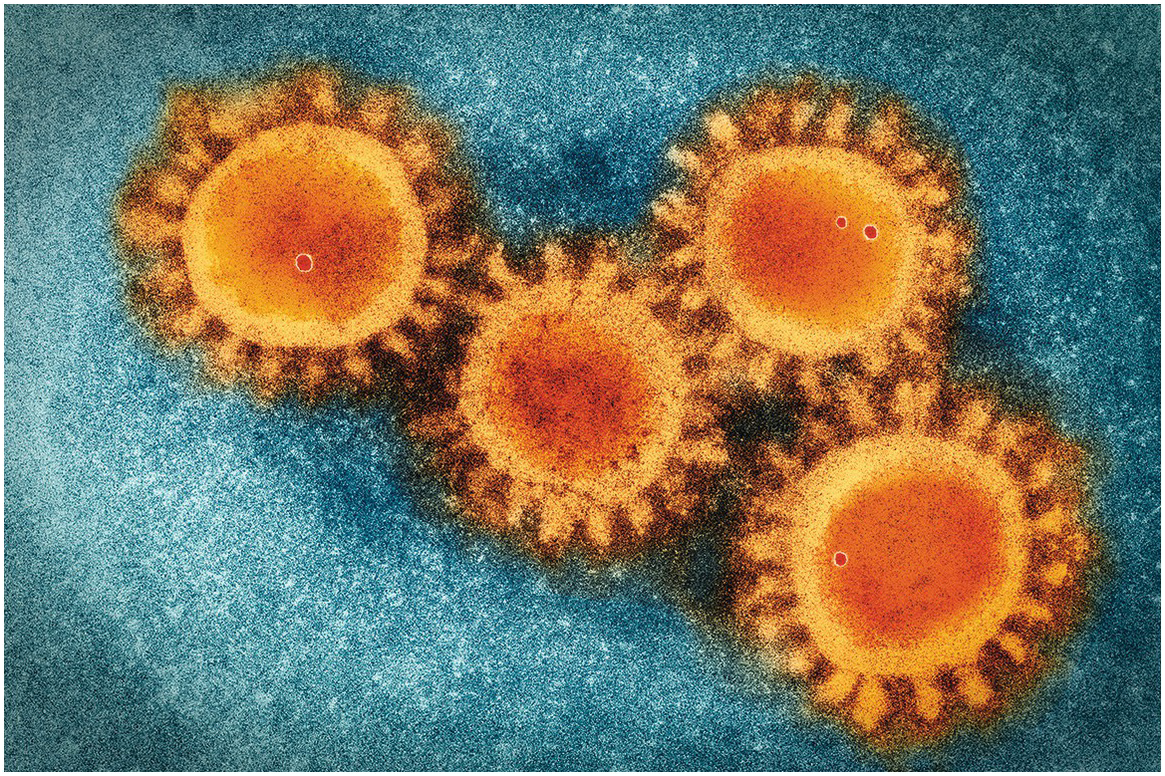Abstract
Viruses are amazing creatures. They are the most common, the most diverse, and the fastest-evolving biological entities on Earth. They infect every form of life known, “hijacking” the complex machinery of cells and forcing them into submission. Being much smaller and less complex than cells, they have a unique, tiny kit of “tools” able to regulate the essential elements of cells and to “fool” their defense mechanisms. It should be noted that viruses do not exhibit any of the life properties we usually attribute to cells (such as metabolism, development, or sensitivity) other than reproduction. What viruses practically “do” is to enter cells, their “hosts,” and use the cellular machinery to produce new virus particles. It is not surprising that many important discoveries in biology during the last 100 years have been made from, and through, viruses. Viruses have provided fundamental clues to the principles of molecular biology, such as how cells replicate and handle their information and the mechanisms that cause cancers, among many others.
We live in a dancing matrix of viruses; they dart, rather like bees, from organism to organism, from plant to insect to mammal to me and back again, and into the sea, tugging along pieces of this genome, strings of genes from that, transplanting grafts of DNA, passing around heredity as though at a great party.
Viruses are amazing creatures. They are the most common, the most diverse, and the fastest-evolving biological entities on Earth. They infect every form of life known, “hijacking” the complex machinery of cells and forcing them into submission. Being much smaller and less complex than cells, they have a unique, tiny kit of “tools” able to regulate the essential elements of cells and to “fool” their defense mechanisms. It should be noted that viruses do not exhibit any of the life properties we usually attribute to cells (such as metabolism, development, or sensitivity) other than reproduction. What viruses practically “do” is to enter cells, their “hosts,” and use the cellular machinery to produce new virus particles. It is not surprising that many important discoveries in biology during the last 100 years have been made from, and through, viruses. Viruses have provided fundamental clues to the principles of molecular biology, such as how cells replicate and handle their information and the mechanisms that cause cancers, among many others.
In this chapter, I introduce viruses in general and what coronaviruses are in particular. Viruses are obligate parasites – that is, they need to infect a host in order to replicate. Coronaviruses infect a variety of animals, and humans in particular. But viruses that are able to infect one species are often unable to infect others. Transmission and infection of a new species is possible via a series of processes that I explain in the next chapter, which is about viral evolution. In this chapter I also explain some of the common features among coronaviruses, including the proteins they have and their function, as well as providing an overview of their genome, the container of their genetic information. Reading viral genomes provides useful information about how viruses relate to one another, how they evolve, what their main constituents are, how they replicate, and how they interact with their host. This chapter provides a background for understanding what is special about the SARS-CoV-2 virus, the agent responsible for the COVID-19 pandemic.
What Is a Virus?
Viruses are small, infectious particles that replicate inside cells. They can enter cells and “hijack” the cell’s machinery to make thousands of copies of themselves, which in turn can go on to infect other cells. Viruses are very small. The coronaviruses have a diameter of 100 nanometers (0.0000001 meter, or about 1/1000 the width of a hair), and are invisible to standard light microscopes. Human cells are 100 times larger. Whereas human cells typically have tens of thousands of different proteins, the building blocks of all living organisms, viruses can have 10 or so. The small and compact size, and the small number of proteins in viruses, presents a challenge: How can such a small particle effectively “hijack” a complex cell? How can something so small contain the essential ingredients to achieve this? These are some of the most fascinating aspects of viruses, as they can pinpoint the essential aspects of life.
Cells and complex organisms such as humans have adapted to recognize viruses and other pathogens and to eliminate them. They have evolved immune systems that are composed of detection mechanisms that can be “hardwired” in cells (innate immune systems) or learned in the course of responding to infections (adaptive immune systems). The detection mechanisms trigger responses aimed at destroying pathogens and infected cells. Viruses that do not escape immune recognition are eliminated. Successful viruses, however, manage to escape immune recognition.
Viruses are the most common biological entities on Earth, infecting all cellular organisms, from bacteria to large multicellular organisms like humans. They were identified at the end of the nineteenth century as small particles able to pass through thin-pore porcelain filters (able to filter bacteria and larger cells) and cause disease in tobacco plants. The twentieth century led to the identification of many different viruses associated with common and rare diseases, including measles, rabies, acquired immunodeficiency syndrome (AIDS), smallpox, and influenza, among many others.
Viruses are not only the most common, but also the most diverse biological entities. The genetic information of a virus is encoded in its genome, which provides the specifics of what, when, and in what quantity proteins are produced during infection. It provides information on how the virus replicates and how it escapes the host’s immune system. Genomic information in all biological entities is encoded in long molecules – DNA or RNA. Like an audio recording or a book are two different media for storing information, DNA and RNA are two different molecules to encode genetic information. Although all cells use a similar strategy to store genomic information in double-stranded DNA, viruses can use either RNA or DNA (single-stranded or double-stranded). This diversity and the fact that viruses do not share common structures make them difficult to classify. A first broad classification of viruses is by the type of genomic material they use. There are viruses that use DNA as storage material to retain genomic information. Examples of DNA viruses include herpes viruses and smallpox. Other viruses use RNA to store their genetic information; examples of these include the main character of this book, coronaviruses, as well as influenza.
What Are the Coronaviruses?
Coronaviruses are members of a big family of viruses called Coronaviridae, which comprises viruses that infect many different mammals and birds. They are called coronaviruses because in electron microscopy images the spikes on their surfaces resemble a crown (corona is the Latin name for crown) (Figure 3.1). The first coronaviruses were identified in the 1930s as infectious agents causing bronchitis.
Figure 3.1 Viruses, the most common biological entity on our planet. Viruses are the smallest, the most diverse, and the fastest-evolving biological entities known. Although invisible to ordinary light microscopes, viruses can be observed with electron microscopes. Coronaviruses are characterized by spikes protruding from the viral particle, giving the appearance of a crown (or “corona”) shape.
Coronaviruses have a round structure about 100 nanometers (0.0001 millimeters) in diameter. Their genome is the longest of viruses that have RNA as their genetic material, with a genome length of around 30,000 bases (the A, T, C, G letters in DNA [for adenine, thymine, guanine, and cytosine]), and they share a similar genomic organization with related viruses. Most coronaviruses infect only one host, but there are examples, such as the virus causing SARS, that have been shown to infect a variety of mammals, including cats, dogs, Himalayan palm civets, and humans. The diseases associated with coronavirus infections vary in different animals, and include respiratory, enteric, and neurological infections, as well as hepatitis.
Coronaviruses are further classified into different genera based on their genomes:
Alphacoronavirus: These include viruses associated with the common cold in humans, including Human coronavirus 229E and Human coronavirus NL63. These two viruses cause mild respiratory symptoms in humans three days after infection and last for a week; about 30% of infected individuals do not show any symptoms. Lower respiratory tract infections are rare. Other members of this genus have been found in pigs, dogs, and cats.
Betacoronavirus: Members of this genus include SARS-CoV-2, the viruses causing MERS and SARS, and other coronaviruses associated with mild respiratory infections, such as Human coronaviruses HKU1 and OC43. Others have been found in a variety of mammals, including bats, camels, mice, rats, rabbits, hedgehogs, pigs, and cows, among others.
Gammacoronavirus and Deltacoronavirus: These have been found infecting different animal species, including birds and pigs.
Coronaviruses infecting humans prior to the 2003 SARS outbreak were considered to cause mild respiratory symptoms. The main character of this book, SARS-CoV-2, belongs to the Betacoronavirus genus, and is genetically similar to the virus that caused the SARS outbreak in 2003 (SARS-CoV).
Stay updated, free articles. Join our Telegram channel

Full access? Get Clinical Tree









